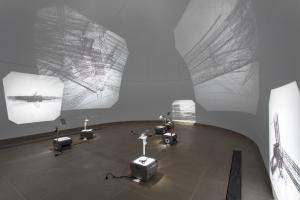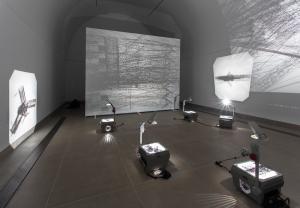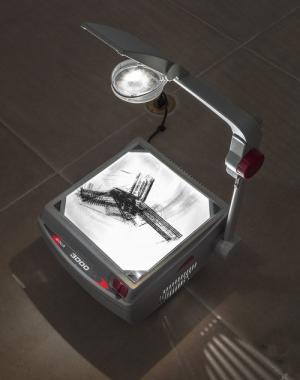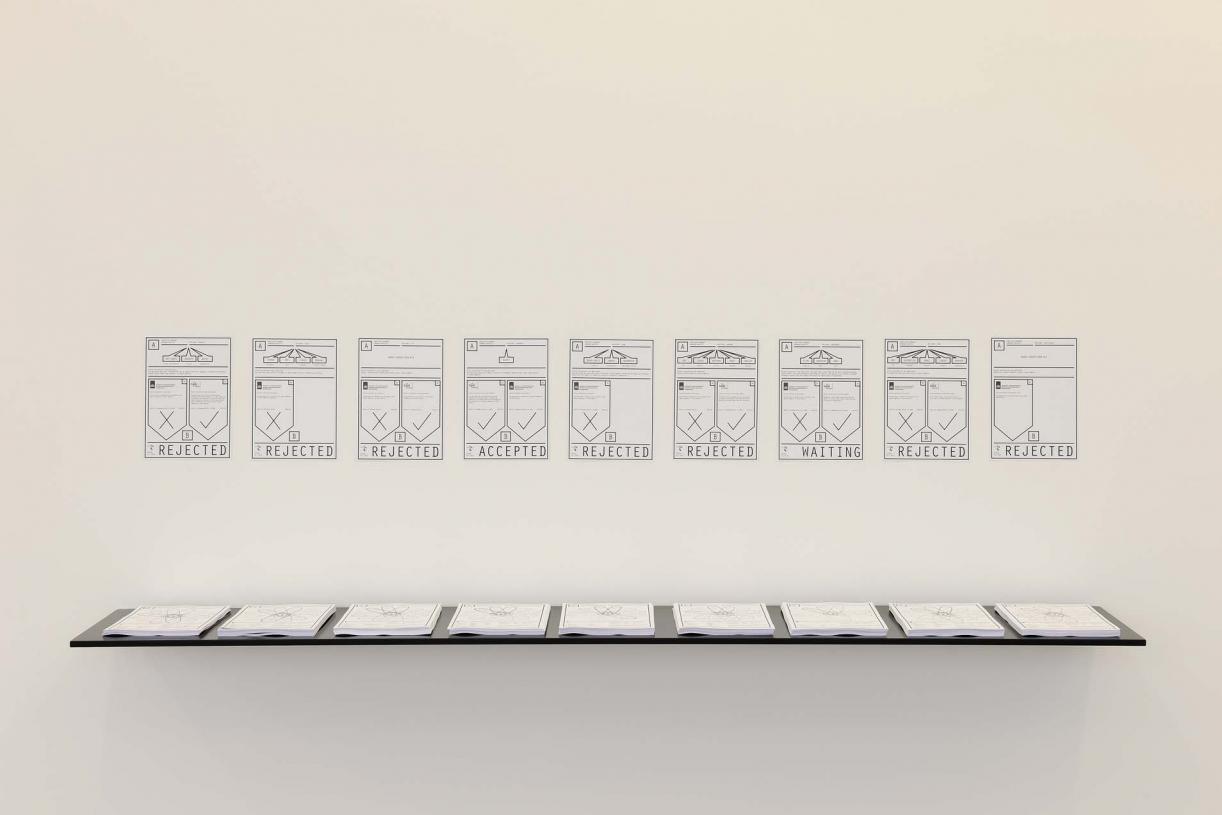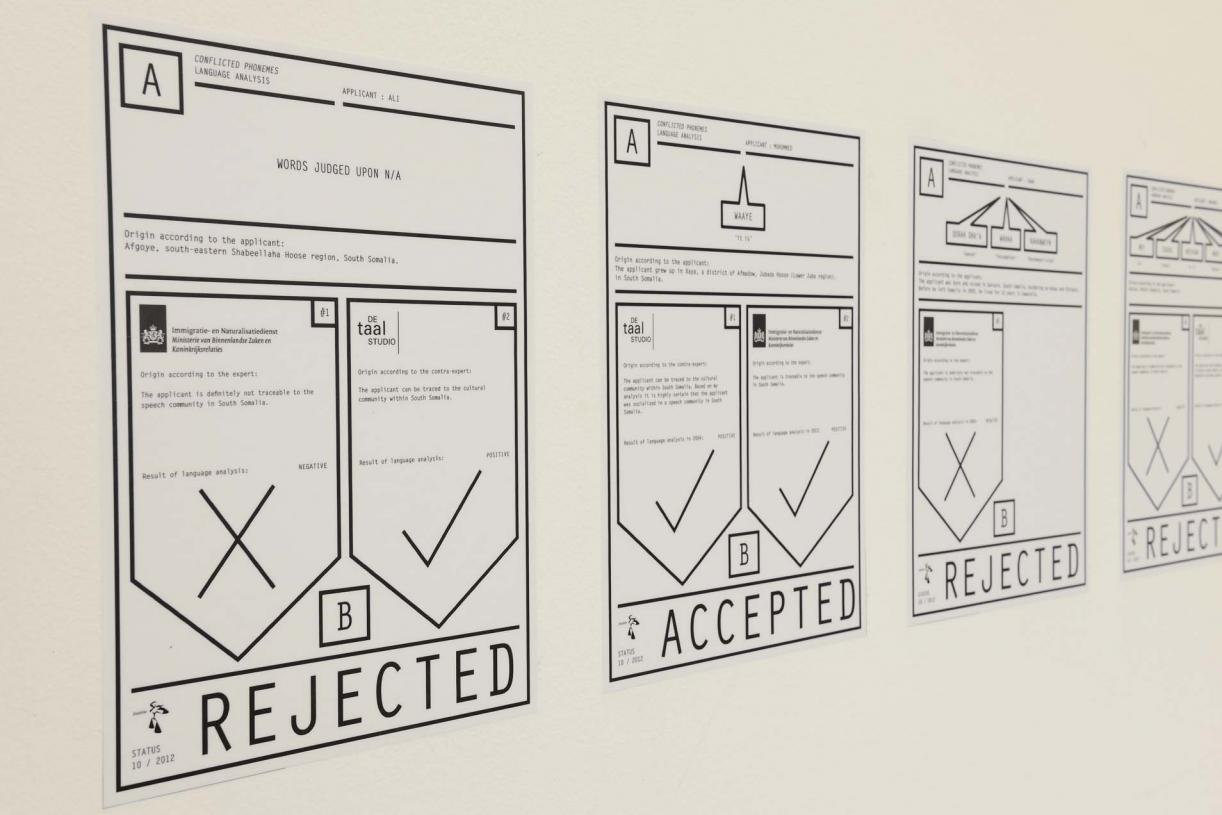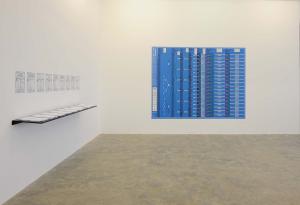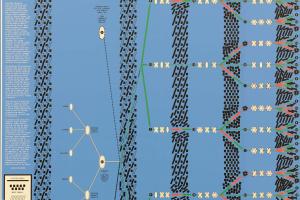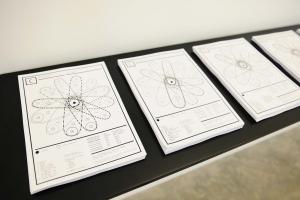Saydnaya
Saydnaya (the missing 19db), 2016
In 2016 Lawrence Abu Hamdan worked with Amnesty International and Forensic Architecture to produce an acoustic investigation into the Syrian regime prison of Sayndaya 25km North of Damascus, where over 13,000 people have been executed since the protests in 2011 began. The prison is inaccessible to independent observers and monitors. The memory of those few who were released is the only resource available from which to learn of and document the violations taking place there. However, the capacity of detainees to see anything in Saydnaya was highly restricted as mostly they were kept in darkness, blindfolded or made to cover their eyes. As a result, the prisoners developed an acute sensitivity to sound. Abu Hamdan worked with survivors’ earwitness testimony to help reconstruct the prison’s architecture and gain insight as to what is happening inside. Since the investigations completion Abu Hamdan has been developing a growing body of evidence that pertains to the projects more fragile truths; works in which human memory, architecture, violence, and the processes of reconstruction are entangled and become irreducible to the language and urgency of human rights and advocacy.
Saydnaya (the missing 19db) is the first of a series of articles of evidence produced by Abu Hamdan that pertain to the projects more fragile truths. The installation presented here is an automated scenography containing a sound work and a light box. The sound piece is played back in a darkened room from a dimly lit mixing desk/sound board on which the volume controls are motorized and autonomously move according to the voices one is hearing in the room. The light box documents the way in which the whisper of the inmates became 4 times quieter after the 2011 protests began; showing a decreasing sound level, from right to left, of a voice speaking at normal conversational volume, a voice demonstrating the level at which one could speak in Saydnaya before 2011and finally the level at which one could speak after the 2011 protests. The 19 decibel drop in the capacity to speak stands as testament to the transformation of Saydnaya from a prison to a death camp. In these 19 decibels we can hear the disappearance of voice and the voice of the disappeared.
The Saydnaya (the missing 19db) was commissioned by the 13th Sharjah Biennial.
Audio file
Saydnaya (ray traces), 2017
"‘Ray tracing’ is a tool for digital visualisation used in architectural design to map all the potential acoustic leaks throughout a building. Each line speculatively models the way a sound wave reflects off the walls, floors and ceilings to produce an architectural ultrasound scan. Here, ray tracing is not applied as a design tool but rather to understand the acoustic constitution of Saydnaya.
These ray traces give a very different image of incarceration - they show that the experience is not only not being to leave ones’ cell, but that one cannot control the sounds that are coming in. In these drawings space is not defined by its separate architectural elements but rather as an environment composed of reflective surfaces. Visually it is just about possible to make out the shape of the stairs or the central cylindrical watchtower in the way the lines bounce off their surfaces and collide with the walls and floors around them. However, these are not designed to allow us to see the space but rather to see the way in which a building sounds."
Saydnaya (ray traces), 2017, Installation: 6 inkjet prints on acetate sheets on overhead projectors, Variable dimensions, Ed. 3 + 2 AP, Installation view, Hammer Museum, LA, 2018
Conflicted Phomenes, Installation View, Sfeir-Semler Gallery Beirut, 2017
Conflicted Phonemes, 2012
In September, 2012, Lawrence Abu Hamdan held a meeting in Utrecht to discuss ways of countering the controversial use of language analysis in determining the origin of asylum seekers and unjustly denying legitimate claims of asylum. The group consisted of twelve Somali people who have all been subjected to a language, dialect, or accent analysis by the dutch immigration authorities and subsequently had their asylum requests rejected. In addition to the Somali asylum seekers, the group included linguists, researchers, activists, cultural organizations, and the graphic designer Janna Ullrich.
These tests, which target the Somali community in particular, seek to determine that asylum seekers are actually coming from small pockets of relatively safe regions in the north of the country, thus making it possible for their applications to be rejected. the group created a series of nongeographic maps that seek to expose and disseminate the realities of this technology/policy. The maps explore the hybrid nature of accent, complicating its relation to one’s place of birth by also considering the social conditions and cultural exchange of those living such itinerant lives. It reads the way people speak about the volatile history and geography of Somalia over the last forty years as a product of continual migration and crisis. Its complexity is a testimony to the irreducibility of the voice to a passport, namely its inapplicability to fix people in space.
These maps are thus meant to offer the rejected/silenced asylum seeker an alternative and nonvocal mode of contestation. As well as being exhibited in various galleries and refugee organizations around Europe, these maps were presented to a chief judge working within the dutch immigration authority. The research was also submitted at a deportation hearing before the UK Asylum tribunal.
Conflicted Phonemes was commissioned by Casco Office for Art theory and Design, Utrecht.
Conflicted Phonemes, 2012, Timeline: Vinyl wallprint 267 x 205 cm, Individual voice-maps, A4 black and white: vinyl wall prints & take away copies printed on embossed paper on a shelf. Wall print 265 x 205 cm; A4 papers 21 x 29.7 cm. Ed. 5 + 2 AP. Installation View, Sfeir-Semler Gallery Beirut, 2017





